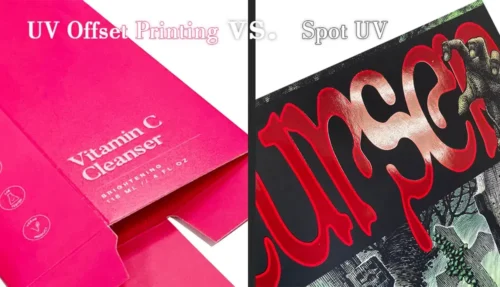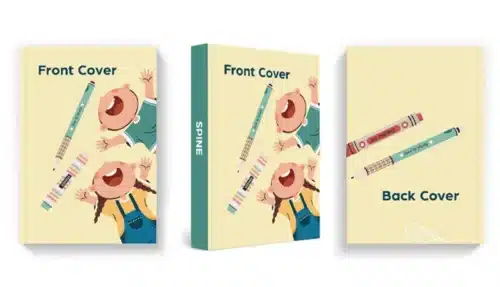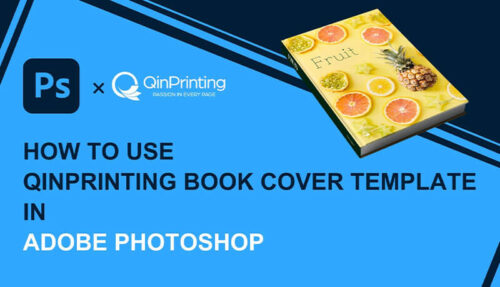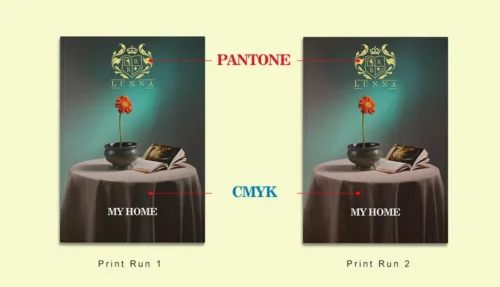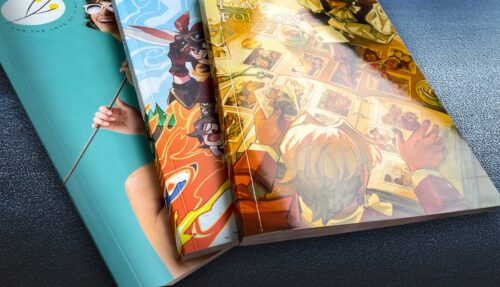We explain the basics you will need to make sure that your book cover, brochure, product catalog, or other project is designed and "print ready" when you choose foil stamping as a finishing effect
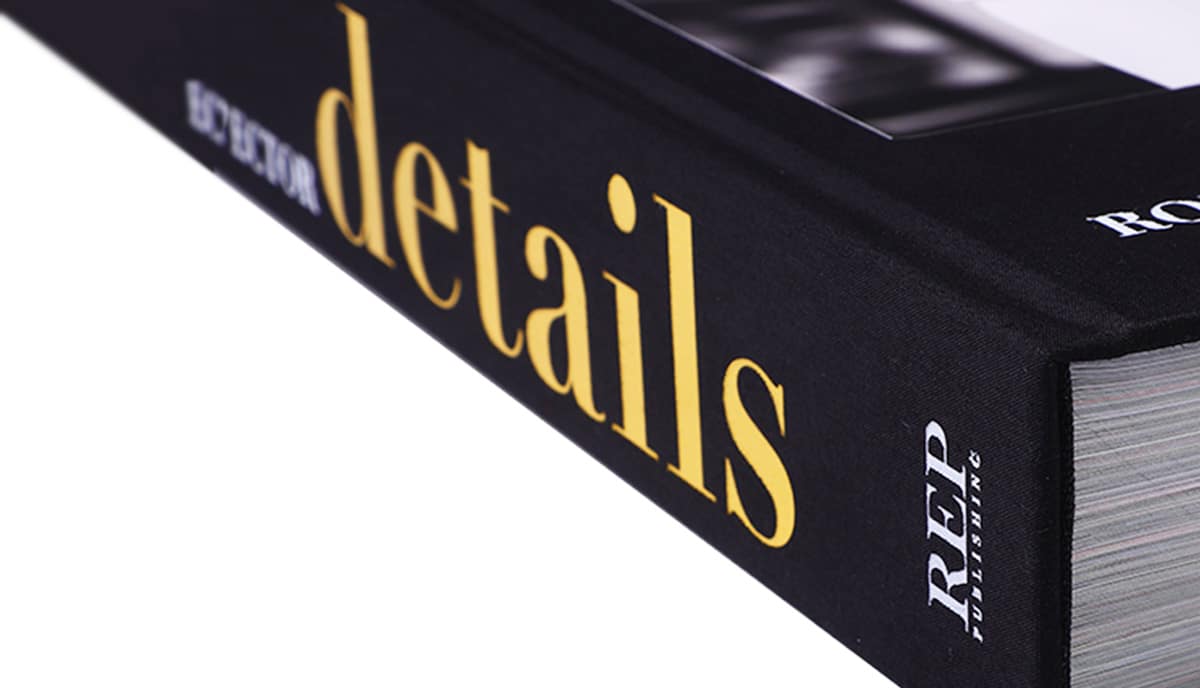
Image: Book Printed by QinPirnting
Foil stamping — either alone or in combination with other finishing effects — can elevate your print project to give it a truly high-end, visually striking, unique look and feel. But you can’t add it as an afterthought. Foil stamping needs to be considered in advance and built in to your design. Let’s look at what you need to know to prepare your document so that the foil stamping process runs smoothly and you achieve the desired result.
Metallic foil stamping
Before we get into design and file preparation, it’s useful to have an insight into what metallic foil stamping is and how it works in practice. Foil stamping is the application of a thin layer of colored foil to a preselected area of the printed surface. You will have seen this effect used on the front of prize-winning novels, for example, where a gold starred medal draws attention to the award; or a bestselling author’s name is often highlighted using foil stamping; and the effect may be deployed in marketing materials such as brochures, catalogs, and even calling cards.
We’ll take the design that you want to foil stamp — which could be lettering, a logo, or some other pattern or imprint — and first etch it into the surface of a metal stamp known as a “die”. Next, we insert this etched die into the hot press stamping machine, along with the printed sheets and a layer of foil. As the machine heats and applies pressure, the die stamps and adheres the foil to the paper in the form of the design etched into it.
Small artisan printing presses may carry out this process using low-tech manual machinery. Here at QinPrinting, we use state-of-the-art automated technology. However, we still manually check and follow detailed quality control protocols at every stage in the process to ensure a perfect result every time.
Foil stamping is relatively inexpensive but renders a truly impressive, luxury, high-end effect. While gold and silver are the most common choices for the color of the foil, many other options are available. For example, other metallic finishes such as copper, bronze, or zinc effects are common.
For a truly stunning result, we can combine foil stamping with other effects. One of the most popular combinations is foil stamping with an embossed surface. This is an effect which literally makes your business name, book title, author name, logo, or other design stand out from the rest of the page!
Top tips to consider when designing and preparing print files for foil stamping
Before you begin designing and preparing your print files for foil stamping — especially if you’ve never done it before — there are a few tips and tricks you should keep in mind. These factors should keep you on track and help to make sure that the finished product is exactly what you want. If at any point you or your designer are in doubt, don’t hesitate to ask us. We are always delighted to help.
Choosing the right kind of paper
For the best results, foil stamping is always based on the clarity of fine line art. Using line art as the basis for your foil stamp effect allows you to work on both coated and smooth paper stocks equally. However, you can foil stamp successfully on heavy paper or textured stock but you will need to make sure that your design is straightforward and bold without fiddly details.
It’s always a good idea to discuss your needs and the effect you’re hoping to achieve with your printer before committing to a design project. If you choose us to print with, for example, a dedicated consultant will guide you with patience and expertise through every step of the process. It’s never too soon to talk to your printer! And getting up-to-date technical information right at the outset can save a lot of time, expense, and heartache down the road.
Foiling and fonts
Choose your font for any text that you wish to foil stamp with care. Because foil stamping involves adding a layer of material — albeit a thin layer — it means that your lettering will be slightly larger or have a “fatter” appearance. With certain fonts this will not be noticeable at all; with others, it will make them hard to read.
We can’t list all the font options and their effects here, but there are a few tips you can use to make most fonts work with foil stamping. The main things to consider are to allow a little extra space between individual letters and between lines. Before you commit to a font, give us a quick call and we’ll tell you if it will work well with foil stamping techniques and if there are any particular adjustments you will need to make at the design stage.
The devil is in the detail
One mistake we often see is trying to render a design with very fine, tiny details as a foil stamp. While in principle this is possible, in practice it rarely produces a perfect result. Foil stamping works best with bigger, bolder design elements and should be used judiciously to highlight a specific area.
The second mistake we often see is simply overusing foil stamping which can have the opposite effect of making your design seem crowded and over-heavy. Use foil stamping to emphasize your company name, your title or author name, your logo, and award button, or a clean line illustration, but not all at once!
Get an all-round view
The best contemporary software allows you to create a three-dimensional rendering of your design. Whether working on the project alone, collaborating with a team in-house, or outsourcing to an independent professional, it’s a great idea to make a 3D model of your cover complete with metallic effect foil stamping.
Less is more
We touched on this earlier when we talked about avoiding over-detailed work combined with foil stamping. But we can’t over emphasize how important it is for a special effect to remain special! If you complicate your cover — whether it’s a novel, high-end brochure, product catalog, or an investors’ report — you risk turning a subtle and effective touch of class into a brash burlesque. In most cases, it’s best to select one, or at most two areas to emphasize with foil stamping.
If in doubt, prove it
While we’ll always send you a PDF proof copy of your finished piece for your approval as a standard part of our service package, you may also request a physical sample copy to be 100% certain of what you’re getting. Depending on the project, a physical sample may incur an additional fee. For certain high-level projects, it may be worth asking for a physical proof.
Talk to us!
We hope that you have a clear understanding of what foil stamping is, the processes involved in designing, preparing files, and printing for foil stamping effects now. Whatever project you have in mind, it’s never too soon to ask us for advice or, if you’re further along in the process, a no obligation quote for the cost of your printing project.
We have an expert, friendly team always ready to help, state-of-the-art technology, high-level quality control protocols, a genuine commitment to personalized customer service, and a willingness to go the extra mile to make sure that all our clients are 100% satisfied with their experience of working with us and the products they receive. Get in touch today by telephone, email, Skype, or our easy online contact form. We can’t wait to help you!





